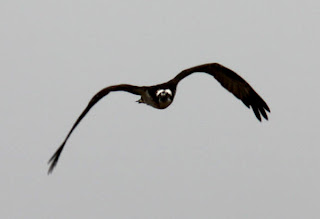Congress designated the Refuge in 1946 to protect waterfowl, particularly the common Redhead. About 80 percent of the entire world Redhead Duck population spends the winter on the Laguna Madre.
An impressive 415 species of birds have been recorded at this refuge, more than any other National Wildlife Refuge in the United States.

Redhead Duck
We left the house at 6:30 this morning and drove to Laguna Atascosa National Wildlife Refuge. Since we have decided we would like to volunteer there next winter, we wanted to go out and look at the volunteer campground and talk to some of the volunteers.
I went into the visitor center and talked to some of the ladies there. They all were very nice and told me they really enjoyed volunteering at Laguna.
Mark was outside and talked to Ed who was going to lead a bird walk at 8:30. We were the only ones on the walk so he gave us a tour of the volunteer RV sites and we chatted quite a bit about what he did there as a volunteer.

Mark with Ed (bird guide for Laguna)

Bewick Wren
After walking around with Ed, we drove the loop trail. The fog started rolling in and the wind was nice and cool!

Greater Roadrunner
The Roadrunner can run 15 miles per hour, probably with much faster spurts when chasing a fast-running lizard!

Overlook at Redhead Ridge (Bayside Lake)

Loggerhead Shrike
The Loggerhead Shrike is gradually disappearing from many areas. The reason is unknown.

Eastern Meadowlark

Long-billed Curlew
The Long-billed Curlew is the largest of our shorebirds.

Caspian Tern
The Caspian Tern is the largest of the terns and larger than many gulls!
When foraging it flies high over water, hovers, then plunges to catch fish below the surface.

Snowy Egret
Known by its contrasting yellow feet which some refer to as 'golden slippers'.

Northern Harrier
The only Harrier in North America.

White-tailed Hawk (immature)
A hawk of tropical grasslands and savannas, the White-tail is fairly common in places on the coastal prairie of Texas.

White-tailed Kite
In the 1940s this graceful hawk was considered rare and endangered in North America. It has increased greatly in numbers.

Greater Roadrunner
THIS ISN'T THE END - KEEP ON READING ...






















































